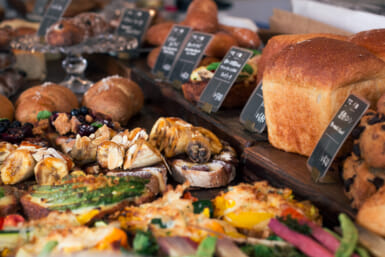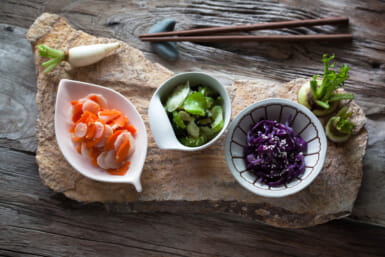Concerning the after-taste of Laphroaig & the artistry of Dick Francis
Of all the single malts, which lo me are what scotch is all about, the ones I like best are those marvelous, peaty Islays. And of the many lslays, Laphroaig is my favorite.
I learned to appreciate Laphroaig more when I was in Fukuoka two weekends ago to do my thing on the dohyo on the last day of the sumo tournament. How this newer, deeper love of Laphroaig’s wonderful smoky flavor came about is an interesting story. At least I hope you think it’s interesting.
It began the Friday before senshuraku, or the last day of the tournament, at a gourmet club dinner. The name of the club is AGI, and the dinner was at the La Riviere restaurant in the Hayakawa Publishing Co. building in Kanda.
Host of the dinner was Hiroshi Hayakawa who brought along as his special guests Dick Francis, the British author, and his wife, Mary. Francis has written something like 25 novels which have sold 29 million copies worldwide; three million in Japan alone. Those printed here were translated and published by Hayakawa’s company.
The author was not there just because he enjoys a good meal with wine, which he and his wife do, but also because the menu for the evening was made up from the wines and foods mentioned in his novel. Proof. With the menu for the evening Hayakawa provided excerpts from the book, red-pencilling the foods and wines to be served that evening.
Some examples: On Page 82, Francis writes, “We ate trout mousse followed by wild duck.” On Page 112, his friend, Sung Li, a Chinese chef, offers him some “Lemon chicken, your favorite. I made it fresh.” On the menu were Fried Chicken with Lemon, Mousse de Truite and Canard Sauvage a l’Qrange, among other delights. The dinner ended with a Laphroaig, served neat to be drunk as an after-dinner liqueur.
I warmed the glass of Laphroaig with my hands, sniffed the musty, peaty aroma and took a sip. I let its golden liquid bathe my tongue, my palate and the sides of my mouth before allowing it to slip into the oblivion of the gullet. The after-taste was glorious. It was a lingering after-taste, how lingering I was to find out in Fukuoka.
Prior to Fukuoka, certain events look place. The Saturday morning following the Friday dinner I had my usual breakfast of bacon and eggs, grapefruit and coffee. I followed it with a highly spiced lunch at my favorite Korean barbecue spot, where I had tongue, tripe and slices of beef rib with kimchi, washing them down with beer.
That afternoon I caught a plane for Fukuoka and, after I had settled myself in my room at the New Otani Hotel, went down to the sushi-ya in the first basement and had more than ¥10,000 worth of sushi and sake.
I must have drunk quite a bit of sake for Sunday morning I woke up with a demanding thirst. I went to the bathroom, poured a glass of water and took a drink. Then it happened! As the water went over my tongue and down my throat, I tasted Friday’s Laphroaig all over again. That’s a lingering after-taste for you!
Anything that can last through the breakfast, lunch and dinner I had has to be good. I really enjoyed that glass of water.
Laphroaig plays a significant part in Francis’ Proof. It is false Laphroaig that starts the plot on its way and leads to a well-organized scam, involving hijacked tankers filled with low-grade scotch and many very exciting moments.
This is not a book review, though it may sound like one at times. But, to get a little more book-reviewish, I will say that those who like their mystery and excitement served with good wines and food will enjoy the novel.
* * *
NOTE: In Fukuoka I went to the Takasago Beya’s senshuraku party to greet the new Takasago who was Sekiwake Fujinishiki in his fighting days. There I met an American couple. Assuming they had been in Japan for a long time as such parties are closed fairs, I asked them when they first came. To my surprise, they told me four months before.
I wondered how they were able to get an invitation to the party, since newcomers generally don’t know such parties exist. They explained they were not only husband and wife but a chef and pastry chef team. They were Mr. and Mrs. Andrew Wilkinson. He is chef de cuisine at the Hotel Clio Court in Hakata; she’s his pastry chef. It is a branch of the Hotel Clio Court in New York.
How did they get invited to the party? Konishiki had eaten there a few times during the Fukuoka tournament and, at some occasions, brought other sekitori with him, I promised I would try his restaurant the next lime I am in Hakata.








